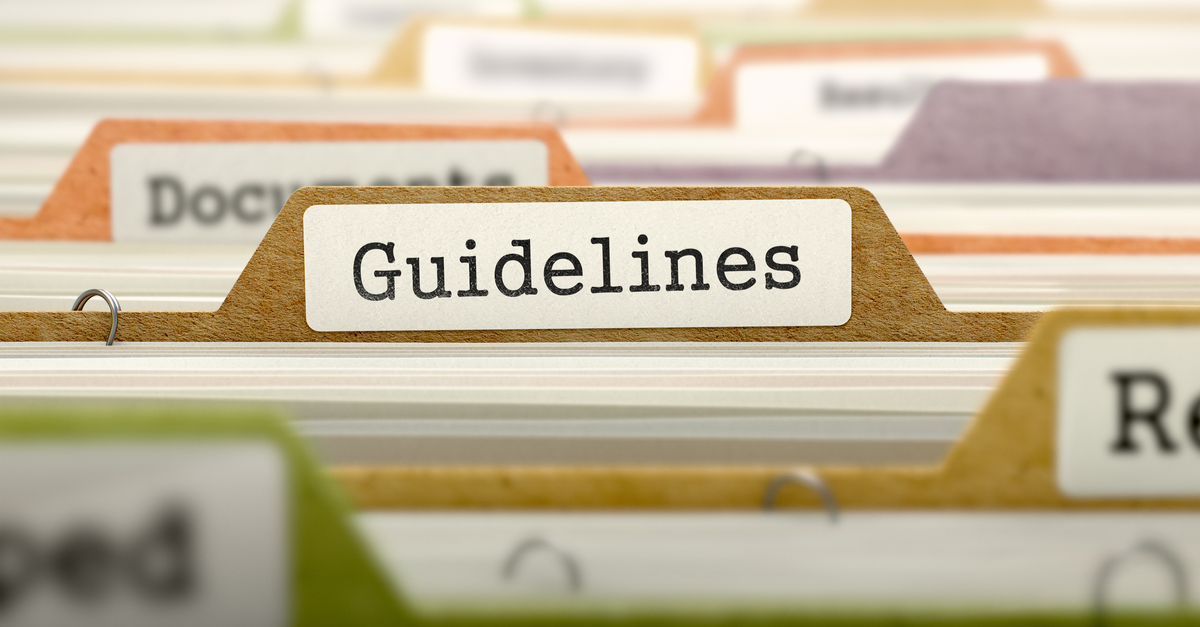Last Updated on June 26, 2022 by Laura Turner
Updated February 15, 2022. The article was updated to correct formatting and minor grammatical errors.
Clinical practice guidelines are essentially the Wikipedia of the medical world and are important to students for a number of reasons:
- Guidelines save you time, by saving you from reviewing thousands of articles
- Guidelines can help you study and perform well on clinical rotations
- Guidelines are important for CME/keeping up your license
- Guidelines help protect you from litigation and may be tied to reimbursement
So whether you are an aspiring physician, dentist, pharmacist, or other healthcare professional, at some point you will need to familiarize yourself with clinical practice guidelines.
What are guidelines?
You can think of guidelines as the “how-to guides” for a given disease or topic–supporting the rationale for diagnosis, management, and/or treatment. Most guidelines are published by medical specialty societies (such as the American Heart Association or Infectious Diseases Society of America), as well as governmental bodies (such as the US Preventative Services Taskforce). There are guidelines for nearly every therapeutic area (neurology, podiatry, ophthalmology, etc.) and topic (diabetes, heart failure, asthma, etc.). So no matter which profession or specialty you choose, there will be hundreds, if not thousands of guidelines to consider.
In most cases, the guidelines are authored by an assembled panel of experts on the given topic. The panels may be comprised of physicians, nurses, pharmacists, specialists, generalists, and even patients. These experts synthesize the evidence from thousands of published articles and studies (so you don’t have to) to arrive at a recommendation for each aspect of the topic. The panels are large, the process is long, and the results can easily exceed 100 pages (just imagine a large group of individuals agreeing on anything, let alone something that can make the difference between life and death).
You, as a medical professional, are expected to be familiar with all the guidelines in your chosen specialty, as well as know when updates are published. This can be especially daunting if you are in general practice, and the burden may keep you awake at night.
Why do we have guidelines?
From a high level, some of the common benefits of guidelines include:
- To describe appropriate care based on the best available scientific evidence and expert consensus
- To reduce inappropriate variation in practice
- To promote efficient use of resources
- To act as focus for quality control, including audit
- To highlight shortcomings of existing literature and suggest appropriate future research
How can they help me?
- As a student, guidelines can be a fantastic resource to learn from and can even help you study for exams.
- It’s not just students that need to keep up with guidelines, either. It is said that 10% of medical knowledge becomes obsolete every year. Over the past several decades, the medical profession has greatly expanded its expectations for continuing education. Continuing medical/pharmacy/nursing education (CME) is largely driven by evidence-based medicine and clinical practice guidelines.
- Understanding and following guidelines can also protect you in the case of a malpractice suit. “Following the evidence-based guidelines” is an incredibly strong defense or justification for or against certain clinical decisions. On the flipside, by not following the guidelines you are opening yourself up to a world of scrutiny.
- Guidelines will become only more important as time goes on. Efforts are even being made to tie reimbursement to performance, which would be based on well-established guidelines and quality measures.
If maintaining your license, protection from litigation, and increased reimbursement aren’t good enough reasons to convince you that guidelines are important, remember this: guidelines are also proven to improve patient outcomes–and isn’t that the whole purpose of practicing medicine?
Overwhelmed?
We’ve established that there are literally thousands of clinical practice guidelines, that many guidelines can easily exceed 100 pages, and that you are expected to know what each of these guidelines says and when they update. Seriously… can’t someone simplify this a bit–maybe with a CliffsNotes version or something?
Glad you asked. Guideline Central was founded in 2002 and works with nearly 40 different medical societies to create “quick reference” versions of clinical practice guidelines. These summaries extract the key recommendations, algorithms, tables, and other critical content into point-of-care references, useful when you need an answer in a hurry and also for those ulcer-perforating exams.
Guideline Central maintains the largest quick-reference guidelines library in the world, including over 2,000 publicly available guideline summaries, as well as 270 “premium” pocket guideline summaries in both hard copy and digital versions. These summaries were developed in cooperation with the societies that authored the full-text guidelines, so you don’t have to worry about whether the content is credible or not.

*An SDN Partner Site, Guideline Central is a separate entity from SDN and has a separate privacy policy. Any information you provide on their website will fall under Guideline Central’s privacy policy.
